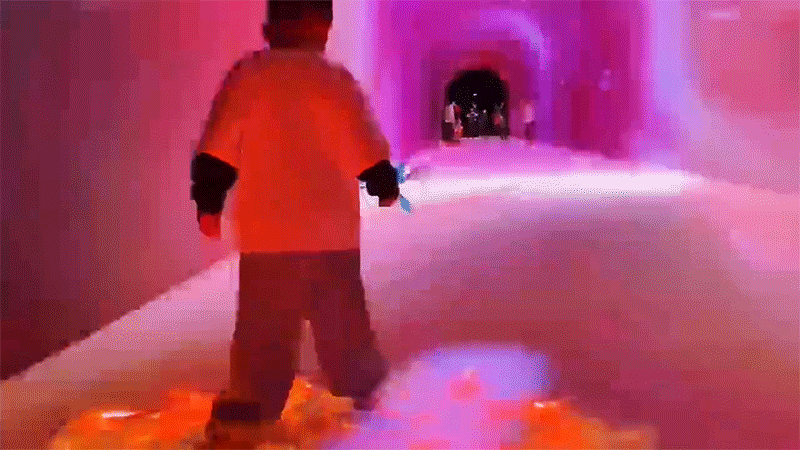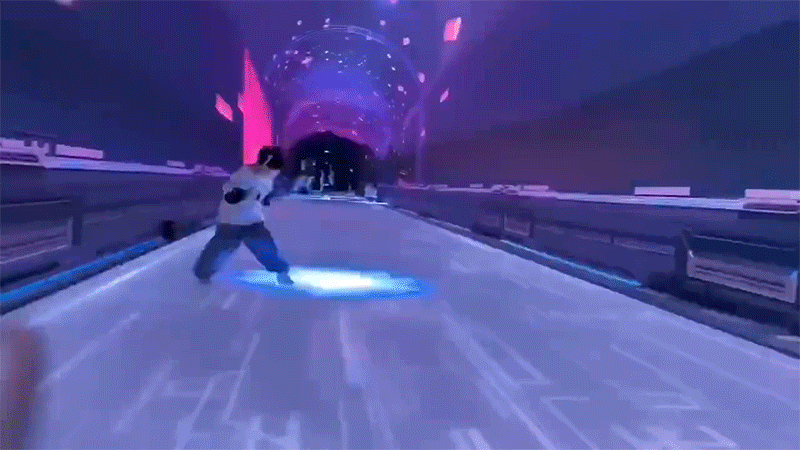Views: 0 Author: Site Editor Publish Time: 2024-12-30 Origin: Site








Yes, Sensor LED floors can be highly customized to create interactive experiences tailored to the specific needs and goals of the installation. The flexibility of these floors allows for personalization in terms of design, content, interactivity, and features. Customizing a Sensor LED floor enhances user engagement and can transform a regular space into an immersive, interactive environment. Here are some ways Sensor LED floors can be customized:
Animations and Graphics: The visuals displayed on the floor can be fully customized. Whether it’s dynamic patterns, brand logos, interactive games, or video content, the floor can display animations that respond to user input (such as movement, pressure, or touch).
Interactive Games: For public spaces like malls, museums, or entertainment venues, the content can be tailored to create games or challenges that encourage users to interact with the floor. For example, a game might involve players stepping on specific parts of the floor to collect points or navigate through a maze.
Branding and Theming: Businesses can use the floor to promote their brand by displaying logos, promotional messages, or thematic elements that reflect the company’s identity. For example, a retail store might have the floor display seasonal promotions, special offers, or product advertisements that interact with customers as they move.
Pressure and Motion Sensitivity: The interactivity can be customized based on the types of sensors used. Pressure sensors can trigger specific reactions when someone steps on the floor, while motion sensors can detect the presence or movement of people without physical contact. This allows the creation of different interactive behaviors based on user actions.
Step-to-Change: When a person steps on a certain area of the floor, it can trigger a change in the displayed content, like color changes, shapes, or dynamic visuals.
Walk-to-Activate: Motion sensors can detect a person’s movement across the floor and display content that follows or reacts to the movement in real-time, providing a fluid and interactive experience.

Multi-User Support: For certain applications, you can customize the floor to support multiple users simultaneously. This can be especially useful for installations at trade shows, public events, or gaming setups where multiple people can interact with the floor at the same time, triggering unique responses based on their positions.
Touch-Based Interactions: In some setups, the floor can be customized to respond to touch gestures (e.g., tapping, swiping, or pressing) to navigate through menus or activate different content, similar to how touchscreens work.
Gesture Recognition: Advanced interactive experiences can involve recognizing specific hand or body gestures, such as raising a hand or waving, to trigger specific content or actions.
Environment Simulation: Sensor LED floors can be customized to simulate different environments, such as a beach, forest, or outer space. When users step on certain areas, the floor can trigger sound effects, animations, and visual changes that enhance the immersive experience.
Storytelling and Gamification: Interactive LED floors can be used to create narrative-driven experiences. For example, in a museum or theme park, the floor can change its visuals to tell a story as visitors walk through specific areas, guiding them through an interactive storyline.
Event-Specific Customization: During events or special occasions, the floor can be customized to display event-specific themes or content. For example, at a wedding, it could display romantic patterns or a couple’s monogram; at a trade show, it could show product-related visuals.

Adjustable Sensitivity: The sensitivity of the pressure or motion sensors can be customized based on the desired level of interactivity. For instance, some areas of the floor may be more sensitive to light pressure, while others might require more force to trigger an effect.
Multiple Sensor Types: A customized Sensor LED floor can integrate different types of sensors (pressure, motion, proximity, touch) to enable complex interactions. For example, the floor could display different content depending on whether a person is walking, standing still, or touching the floor.
Color Schemes: The LED lights can be programmed to show specific color schemes, gradients, or patterns that change in response to the user's actions. For instance, a floor could display one set of colors when people walk through it, and another when they interact with it.
Lighting Effects: Advanced lighting effects, such as fading, pulsing, or strobing, can be customized to suit the environment or event. These effects can create dramatic visual experiences, like simulating waves on the floor or showing ripples or bursts of light.
Brightness and Contrast: The brightness and contrast of the LED display can be tailored for different environments. For example, in a dark room or theater, the brightness may be lower for a more subtle effect, while in a bright retail store, it could be more vivid and eye-catching.
Audio Responses: The interactive experience can be further enhanced by integrating sound. For example, when a person steps on the floor, they might hear sounds such as a footstep, a musical note, or a special sound effect that corresponds with the visual display.
Sound-Based Feedback: In some cases, sound can be used as feedback when interacting with the floor. This can include clicks, alerts, or even narrative voices for guided interactions.

Control and Monitoring Software: The floor’s content and interactions can be managed via custom software that controls the LED display and sensors. This software allows for programming specific reactions, animations, and changes based on user interaction. It can also be connected to real-time data sources for live content updates.
Integration with Other Systems: In advanced installations, Sensor LED floors can be integrated with other technologies, such as motion tracking, augmented reality (AR), or virtual reality (VR) systems, for a more immersive experience.
Area-Specific Customization: The floor can be divided into zones or sections, each with a unique interactive experience. For instance, different areas of a shopping mall or exhibit could trigger different types of content (e.g., product information in one section, brand storytelling in another, and a game in a third).
Multi-Surface Customization: Sensor LED floors can be customized to work across different types of surfaces (such as curved or uneven floors), ensuring that the interactive experience remains consistent regardless of the room or area’s layout.
Sensor LED floors are highly customizable and adaptable for a variety of interactive experiences. Whether you're designing an engaging installation for a retail space, creating an immersive museum exhibit, or developing an interactive game for entertainment, the flexibility of these floors allows for tailored content, interactivity, and sensor functions to meet specific goals. Customizing these floors involves everything from visual design and sensor functionality to audio integration and software controls, ensuring a unique and compelling experience for every user.